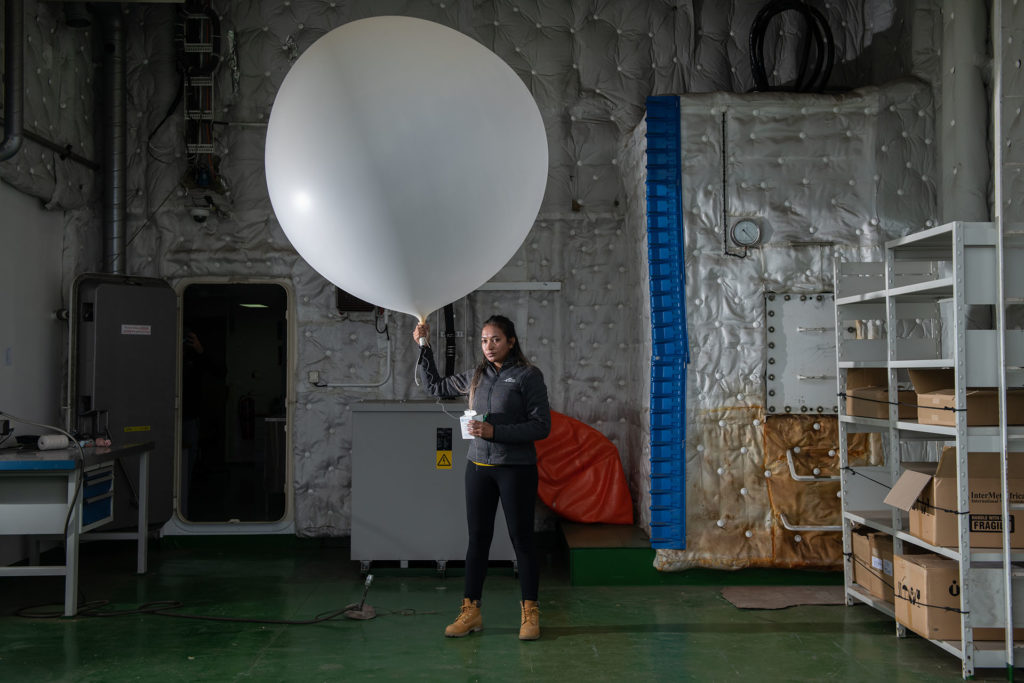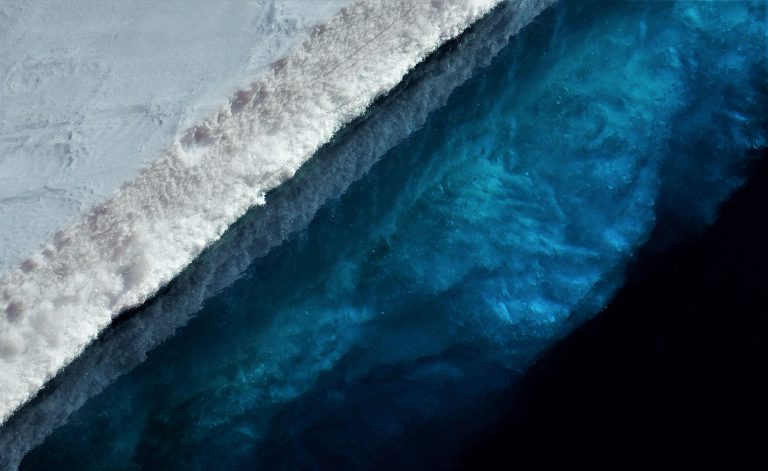The South African Weather Service (SAWS) provided weather forecasts and meteorological measuring instruments conforming to the highest international standards. The S.A. Agulhas II vessel was able to accurately measure atmospheric parameters throughout the Endurance22 expedition. These measurements are supplemented with visual observations (such as weather, clouds, and sea-ice) done manually by the on board meteorologist, giving a more complete picture of current weather conditions.
Meteorology wisdom reveals that a good forecast begins with good observations. Each day, the on board meteorologist compiled three-day weather forecasts using the observations, as well as internet-based numerical weather models. The forecasts are useful for a number of operations on the ship, including the use of the autonomous underwater vehicles (AUVs) essential in the search for the Endurance shipwreck. The accuracy of these forecasts is a testament to the progress of meteorology, given the historic scarcity of surface observations in these parts.

Additionally, several weather balloons have been released into the atmosphere (the highest reaching 22.6km – well into the tropopause) and drifting weather buoys deployed into the Weddell Sea, one of the most under-researched parts of the world. This research will contribute to the global WMO GTS system collecting and sharing worldwide weather data.
Bathymetry of the Weddell Sea

The water depths (=bathymetry) in the Weddell Sea are plotted in white to blue colors. The wreck of the Endurance lies in a water depth of more than 3000 meters. The plot of the cruise track is preliminary and will change according to the ice conditions in the Weddell Sea.
Antarctic Coastlines are taken from the SCAR Antarctic Digital Database (ADD) provided by the British Antarctic Survey (BAS).
Water depths information provided by The International Bathymetric Chart of the Southern Ocean (IBCSO) – digital bathymetric model. PANGAEA, https://doi.org/10.1594/PANGAEA.805734
Interview with the Science team working on the ARGO programme
As part of the science team for the Endurance22 expedition, the South African Weather Service will contribute to the ARGO research programme (ARGO is an international programme collecting and sharing data from inside the ocean) with the deployment of technologically advanced buoys.
Dr. Tamaryn Morris and Thomas Mtontsi coordinated with the meteorology and oceanography team who deployed these technologically-advanced buoys to investigate how sea ice behaves in the Weddell Sea. What can a “smart” buoy tell us, and how do scientists deploy and use these incredible tools. Find out more in the video below:
Dr. Tamaryn Morris is a physical oceanographer and Senior Manager for Marine with the South African Weather Service in Cape Town, South Africa. Tammy has extensive in-field experience in the South West Indian and South Atlantic Oceans using a variety of ocean observing instruments and platforms. She works closely with high-tech buoys that monitor the worlds’ oceans and help produce accurate weather forecasts and climate models. You can read more about her work here.
Thomas Mtontsi is a Science Engagement Officer at the South African Environmental Observation Network (SAEON), a research facility of the National Research Foundation. Thomas coordinates science engagement activities focused on grade 9-11 (aged 14-17) learners and their teachers. He is deeply involved in the “Adopt a Float” program, through which scientists share their work around ocean monitoring with classrooms, inspiring and educating students about the Southern Ocean and climate change. Thomas is currently pursuing a PhD in Marine Science.





